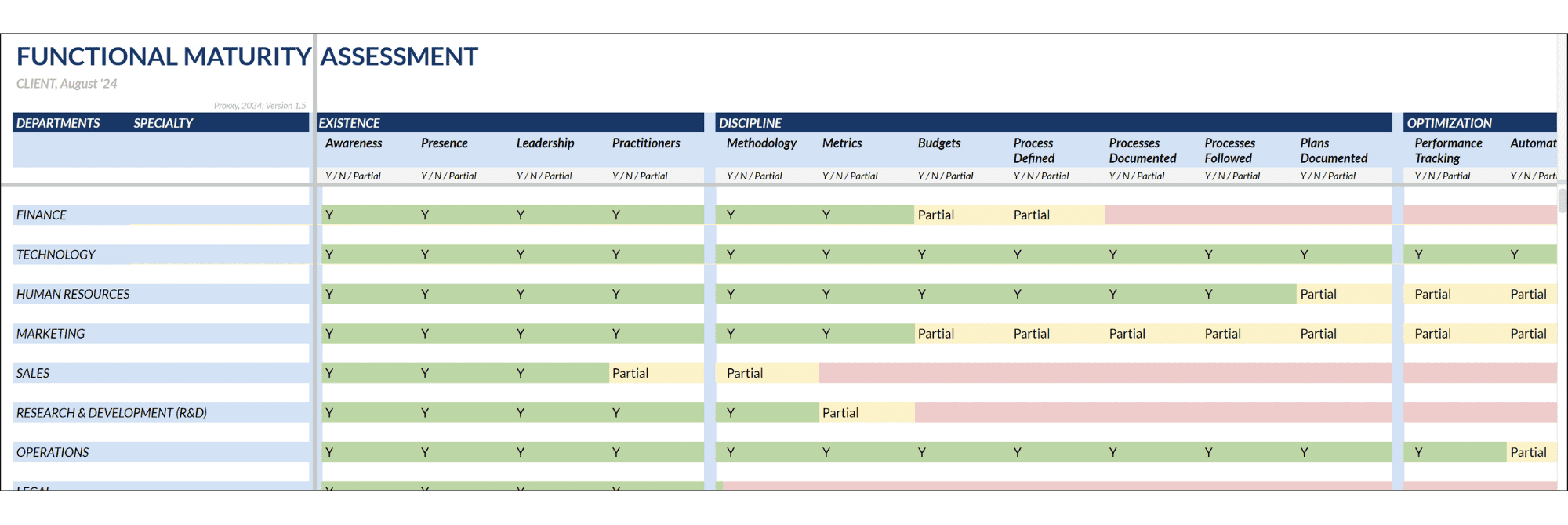Register for your Proxxy Functional Maturity Experience
offered exclusively to DealCon attendees
(one Experience per attendee organization).
If you would like to learn more about this experience, click here.
If you are ready to claim your spot, find a :30 on our calendar and get started!
Functional Maturity Plan
Every business, regardless of the size or industry, relies on a network of interconnected functions to thrive. Marketing, Finance, Operations, HR…every department plays a pivotal role in an organization’s success. The question is, are these functions truly operating at their peak potential in your organization? Are you investing in them properly? Are they evolving at a necessary pace? These are the types of questions you can answer with a Functional Maturity Assessment can shed light on. An empirical, research-based analysis allows you to gauge performance in each key area, independent of who’s at the helm.

